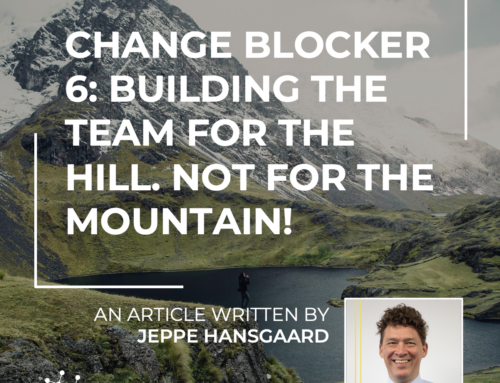FROM OUR CEO
Strong Hierarchies + Network Centricity = Amazing Results?
December 14th, 2022 | From our CEO
Some days ago, Meta announced that they wanted to flatten their management chain. You might say with good reason, when you see a visualization of the many layers between Mark Zuckerberg and most of the people in the Meta organization. 11 layers in total.
Removing a few layers might result in a cost reduction, but it will not change the ability of the company to achieve long-term success through market awareness, customer centricity, innovation and speed.
To achieve this Meta must pursue its original mission statement: “ make the world more open and connected.”. Just inside its own organization.

Are 13 Levels the World Record for Organizational Hierarchies?
When I learned about the 11 layers of Meta, I was sure it was a world record… but then I asked the Innovisor Center of Excellence for Organizational Network Analysis, what we had experienced in the past. ‘Our’ record was 12 layers in a 12,000 person technology organization (Separate question: Are steep hierarchies more dominant in the org design for technology companies? ).
I then asked on Twitter, if anyone knew an organization with more than 12 layers, and learned that Yahoo had 13 layers in 2004. THIRTEEN!!!
Is this then the world record? – or does anyone know of an organization with 14+ layers?
What Is the Implication of Hierarchies?
So why are traditional hierarchies bad? – Well, they are not entirely bad. They provide a lot of organizational clarity on who can decide on what. This benefit cannot be underestimated.
The downside, however, is that they create an over-focus on ‘within the box’-thinking and limited focus on ‘between the boxes’-thinking. In a world, where most critical knowledge & innovation work happens ‘between the boxes’ this is a real problem.
‘knowledge & innovation work happens ‘between the boxes’
But there is also another issue with hierarchies, which is specifically related to strategic change programs. When these programs are cascaded out through steep hierarchies, it empowers the maximum number of people to veto or divert them before they finally reach the people at the frontline.

In the same way hierarchies slow down innovation and knowledge flowing rapidly from customers, markets, and the frontline and back into strategic decision making.
If this is not addressed, then steep hierarchies can drag organizations even though they have the most brilliant products and market positioning.
Example: How One CEO Role Modeled Network Centricity in a Hierarchical Organization
In one organization we worked with, the CEO realized this, when a soaring Asian market demand for a new product line was not reaching the top of the pyramid. Too many organizational layers filtered this business critical information, and it never reached the CEO and his team. The result was an estimated loss in sales of half a billion USD. The CEO swore that this would ever happen again, while he oversaw the company.
the CEO was just listening to concerns and feedback
The CEO therefore decided he wanted to create a network-centric organization that allowed critical information to flow frictionless across the organization. Driven by the informal networks.
He role modeled it himself by engaging in 1:1’s with informal leaders and go-to-people – not only formal leaders – at every single layer of the organization. These sessions were typically held in informal settings – certainly not with a desk in between, and most of the time the CEO was just listening to concerns and feedback.. but as trust was build, he also used his relationships to the informal network to test and roll-out strategic programs, and thus ensuring rapid change adaptation.
His role modeling of network centric behavior quickly spread throughout the organization. Leaders replicated his informal listening activities. Employee engagement skyrocketed, and within only 12 months the company managed to produce its best financial results ever.
More importantly its market awareness, customer centricity, innovation and speed of innovative and knowledge flows have since kept it at the forefront within its industry for almost a decade.
The CEO achieved this without delayering the organization. Instead, he harvested the amazing results produced by a hierarchical and network-centric organization.
The learning is. Great networks and strong hierarchies do not rule out each other. When they work together, they can produce amazing results.
Related articles
Share article
Share article





